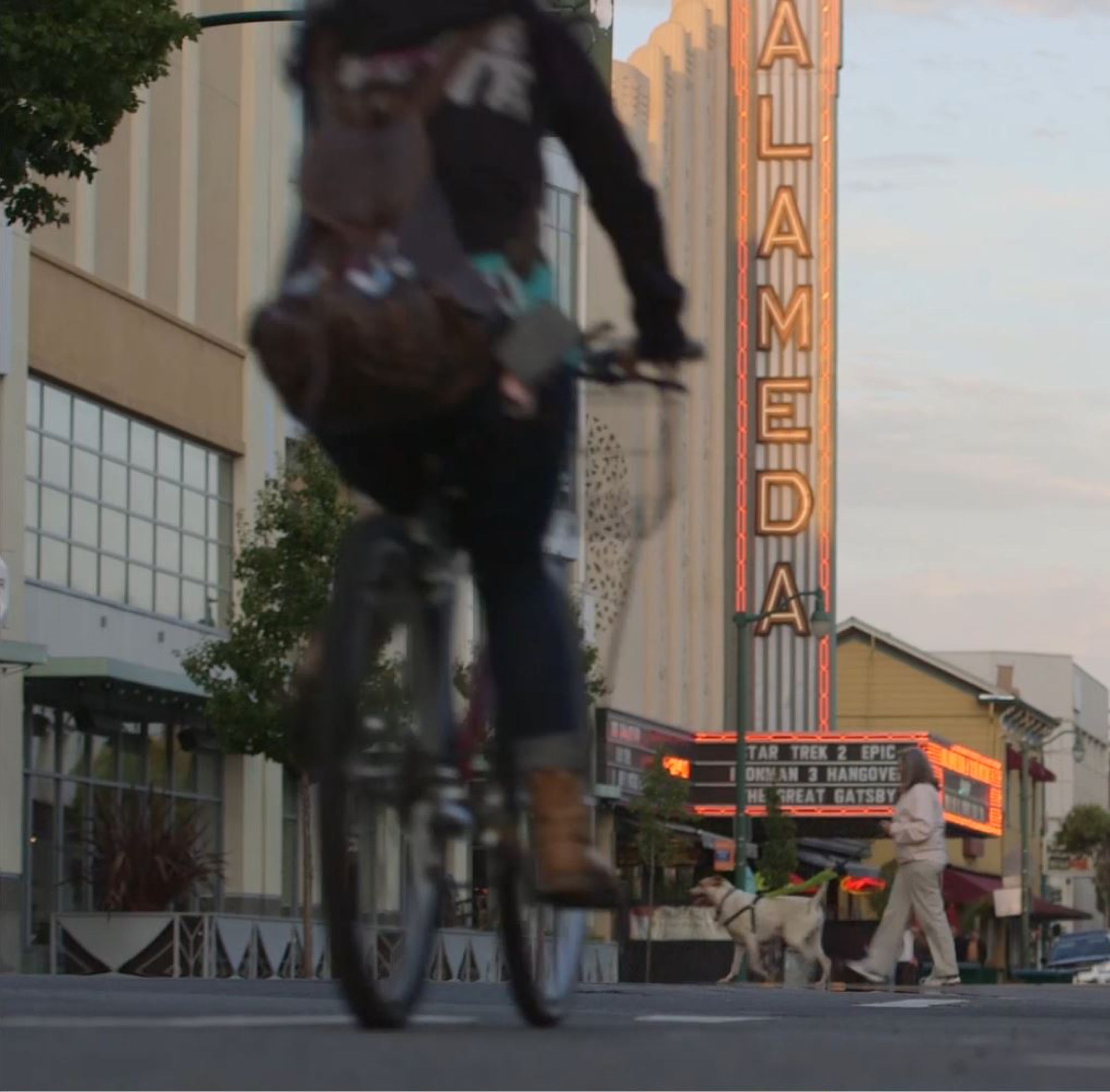Vision Zero is an international movement that aims to reduce traffic deaths and life-changing injuries to zero, while increasing safe, healthy, equitable mobility for all. It addresses all collisions, whether people travel by foot, wheelchair, bike, motorcycle, car, or truck. Alameda is one of many Vision Zero communities across the nation. Alameda's Vision Zero efforts are guided by its Vision Zero Action Plan (2021) and Vision Zero policy (2019).
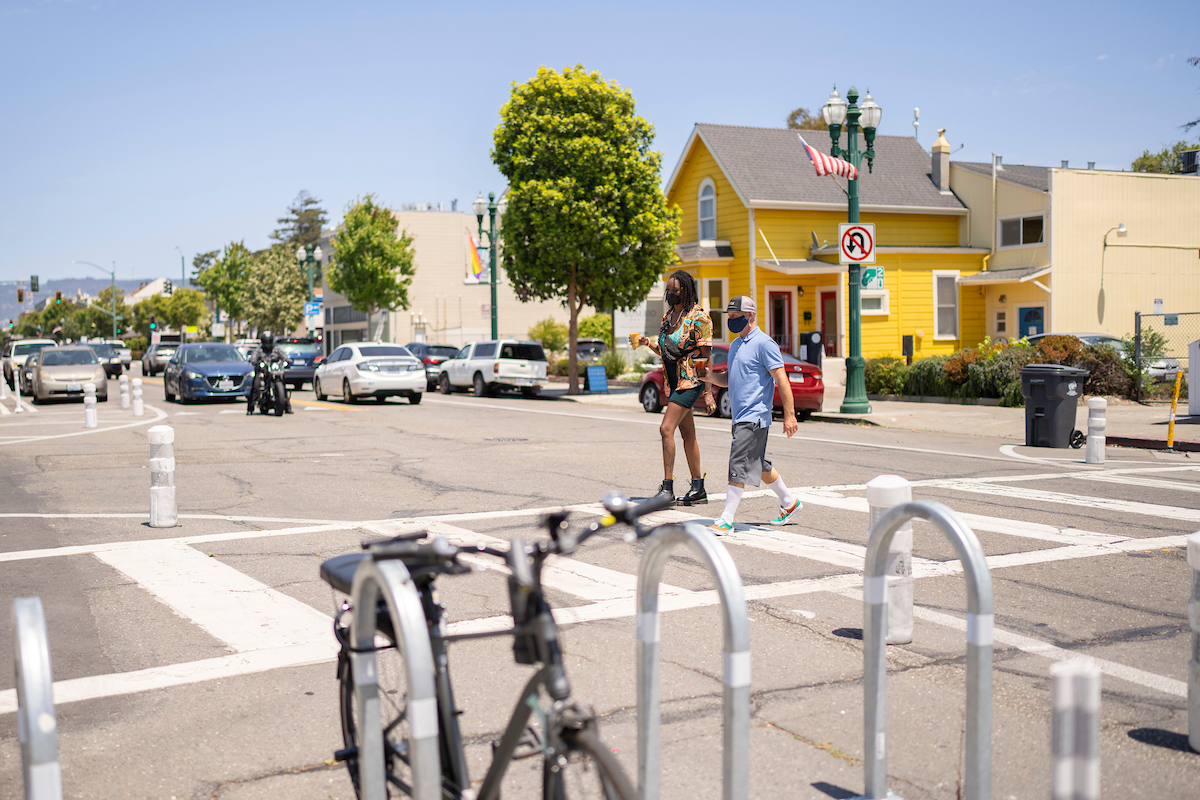
No traffic fatality is acceptable, and every death affects families, loved ones, and the community. In 2023, three people died and six were severely injured in traffic collisions on Alameda streets. Crashes involving people walking and biking are disproportionately dangerous, representing 62% of fatal and severe injury crashes from 2009-2018. As of 2022, the City’s rate of traffic fatalities + severe injuries was 54% lower than the Alameda County rate and 66% lower than California. More details:
Traffic Fatality + Severe Injury Rate Per 100,000 Residents
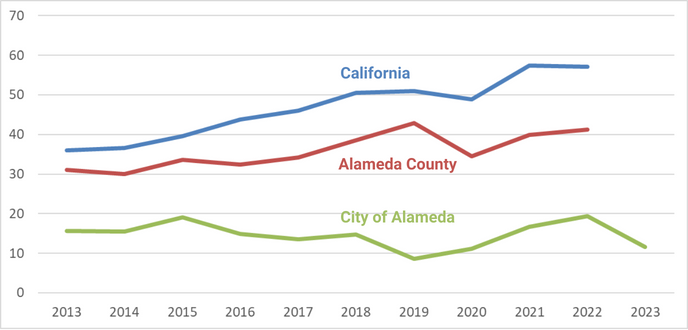
Traffic Fatalities and Severe Injuries
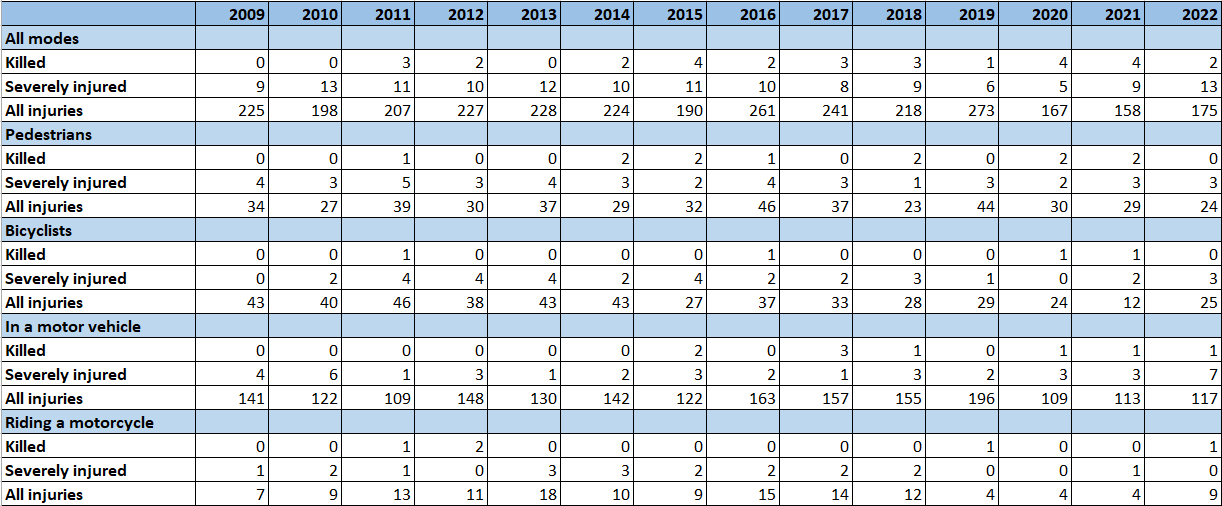
*Click on the table for a larger/accessible view (also includes quarterly reports for the current year)
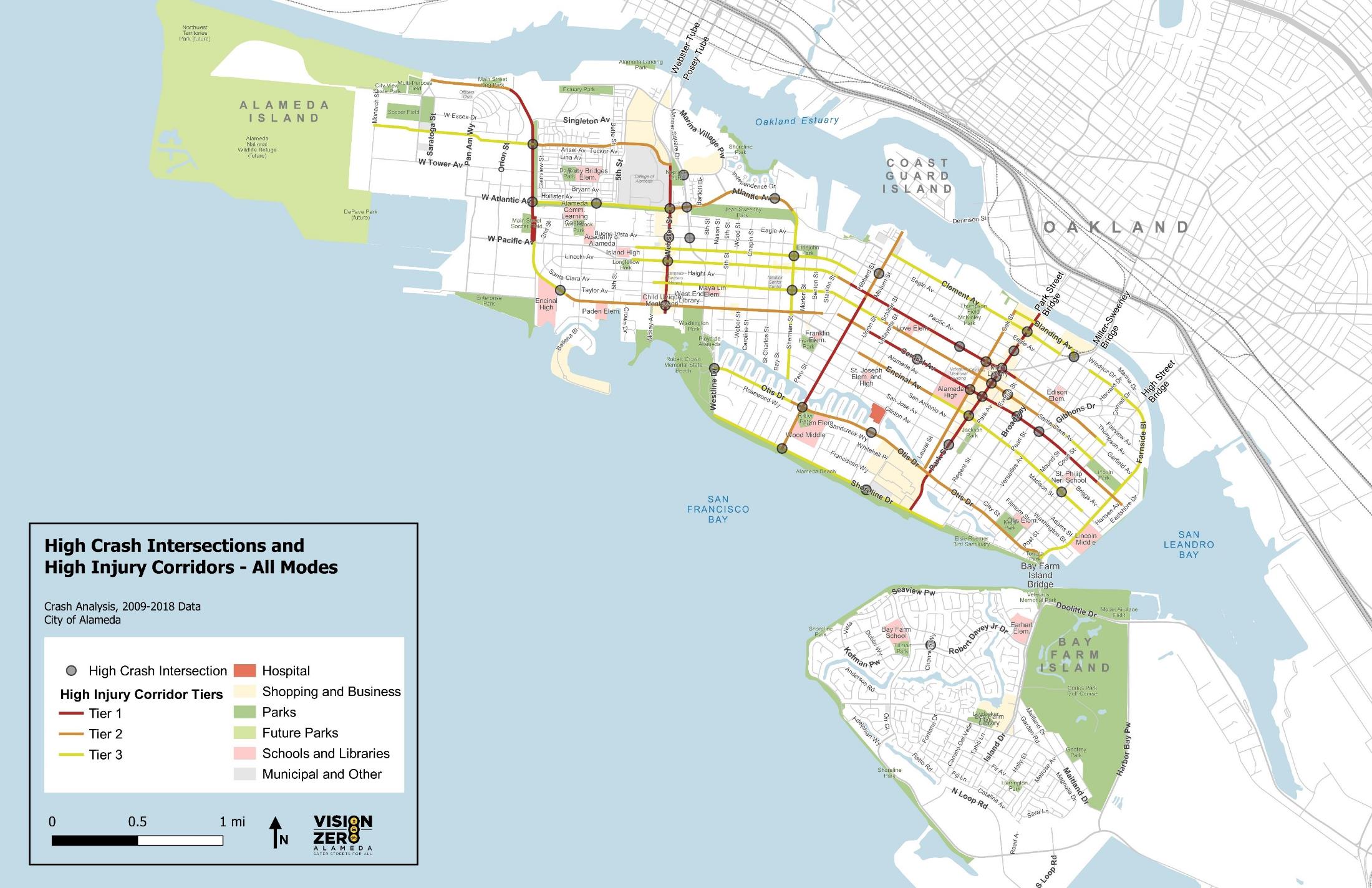
The City uses its High Injury Corridor maps to prioritize traffic safety improvements where they are needed most. In Alameda, 73% of crashes occur on high injury corridors, even though they only cover 20% of the streets. These corridors are the stretches of road with the highest crash densities, weighted by severity and broken into three tiers, with Tier 1 indicating the streets with the greatest frequency and severity of crashes.
High injury corridor maps:
The Alameda Vision Zero Policy (2019) declares that public safety is the highest priority in managing the city transportation system, with the goal of reducing and eventually eliminating fatalities and severe injuries among all road users.
The Resolution to Make Street Safety Improvements in 2022 and Beyond (2021) approves the details and timeline for an ambitious slate of Capital Budget street safety projects, and approves $2 million to accelerate them.
The Signalized Intersection Access Equity Policy (2021) calls for equitable access at signalized intersections for people taking transit, walking, biking, or driving; defines locations that should have automatic pedestrian WALK signals; and limits pedestrian barricades.
The Policy on Street Width, Lane Width, Crosswalks, and Bulb-outs (2020) prioritizes safety for vulnerable road users, establishes standard travel lane widths, provides guidance on marked crosswalks, and more.

The Policy for Improvements to Visibility (Daylighting) (2019) increases traffic safety by calling for sufficient visibility at intersections, enabling drivers to see motor vehicle and bicycle traffic in the cross street, as well as pedestrians entering the crosswalk.

(Source: San Francisco Municipal Transportation Agency)
With the Complete Streets Policy (2013), the City committed to creating and maintaining Complete Streets that provide safe, comfortable and convenient travel for all users, such as pedestrians, bicyclists, transit riders, people with disabilities, motorists, emergency responders, seniors, and children.
See the Building Safer Streets page for City guidelines related to street safety.
Plans and policies that called for Vision Zero before policy adoption
Have you had a near-miss experience where you narrowly avoided a crash? Are drivers speeding on your road, or do you feel unsafe crossing specific intersections? Let us know by submitting a "Street Safety Concern" on SeeClickFix. Your report will be used in combination with crash data and equity indicators to prioritize street safety investments, and will help the City end traffic deaths and serious injuries. For maintenance issues like cracked pavement, faded paint, inoperative street lights, or broken street signs, please choose associated SeeClickFix categories to send your report directly to maintenance staff.

Keep in touch with Vision Zero and traffic safety in Alameda! Mailing list members will receive updates about the Vision Zero Action Plan, as well as bimonthly bulletins about Alameda's ongoing traffic safety efforts.
Join the Vision Zero mailing list
